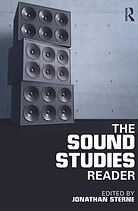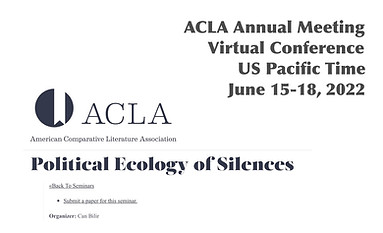
supplementary web page for
"Creative" Sound Studies:
a Seminar on Interdisciplinary Methods of Music and Listening
"Yaratıcı" Ses Çalışmaları: Müzik ve Dinlemenin Disiplinlerarası Yöntemleri Üzerine Bir Seminer
dr. can bilir
Jan 13, 2022: Jan Atatürk Kitaplığı, Istanbul Büyükşehir Belediyesi (Ataturk Library, Istanbul Metropolitan Municipality)
Introduction Can's Research Focuses
DMA Dissertation: The Composer’s Mind Through the Looking Glass: An Analysis of Pitch-Centricity in Zaïde/Adama
Can Bilir’s recent comparative research examines the digital and acoustic sounds with sound-place relationship, (eco)cosmpolitanism (Kant 1795; Heise 2008), human-induced risk and ecological degradation, virtuality and actuality (Deleuze 1968D.&.r., 1966 L.B.), Digital Analogies (Moseley 2016), and social imagination (Anderson 2006) in metropolitan areas, rural places, and remote natural environments such as mountains and jungles, primarily in Turkey and Thailand and additionally in Europe and North America.
Relevant sub-topics:
-
Anthropocene, New-Materialism, and Posthumanism
-
Speaker (hierarchies of Monitors and Dominant Narrators ) in public spaces and relations of silence
-
Changing music productions and digital techniques
-
Methods of live and recorded media and digital circulations
-
Observation, analysis, and processing on individual and communal audibility of other-than-human persons, bird populations, marine life, and other animals
-
Secular, Islamic ve Buddhist frictions
-
Philosophy of Mind and Problems of Imagination and Consciousness, and Determinism: Non-reductive Physicalism (Pereboom 2011) and hard- incompatibilism (Pereboom 2001) etc.
-
Lines, Forces, Vectors, Points, Scales, Objects, and Schematics, contingent on the epistemology of the social imaginaries and modes of productions.
Türkçe:
Doktora Tezi: Ayna'dan İçeri Bestecinin Zihni: ZAÏDE /ADAMA’nın Bir Perde Merkezi Analizi
Can Bilir’in son dönem karşılaştırmalı araştırmaları başta Türkiye ve Tayland olmak üzere Avrupa ve Kuzey Amerika’yı da içine alarak metropollerde, kırsalda, dağ ve jungle gibi uzak doğal çevrelerde dijital ve akustik ses odaklı ses-yer ilişkisi ve farklılaşmalar (Deleuze 1968; Attali 1977), (eco)cosmpolitanism (Kant 1795; Heise 2008), insan kaynaklı risk ve ekolojik bozulma, Dijital Analojiler (Moseley 2016), sanallık ve gerçeklik (Deleuze 1968D.&.r., 1966 L.B.) ve toplumsal imajinasyon (Anderson 2006) konuları üzerinedir.
İlgili alt konular:
-
Antroposen, Insan Sonrası, ve Yeni-Materyalizm
-
Kamusal alanda Speaker (Hoparlör ve Dominant Anlatıcı olarak hiyerarşiler) ve sessizlik ilişkileri
-
Değişen müzik prodüksiyonları ve dijital teknikler
-
Canlı ve kayıt medya ve dijital dolaşım yöntemleri
-
Insandan-başka kişilerde, kuş toplumunda, deniz hayatında, ve diğer hayvanlarda bireysel ve toplumsal duyuş üzerine gözlem, analiz, ve işlem
-
Laik, İslamî, ve Budist sürtüşmeleri
-
Zihin Felsefesi, İmgelem ve Bilinç Problemleri, Belirlilik (Determinism)
-
Toplumsal tahayyüllerin ve üretim tarzlarının epistemolojisine bağlı Çizgiler, Kuvvetler, Vektörler, Noktalar, Ölçekler, Nesneler ve Şemalar.
1-Dissertation (DMA) Cornell University, 2019
Selections from the dissertation and EuroMac 10 paper presentation examples
10th European Music Analysis Conference, Moscow Tchaikovsky P. I. Conservatory, 2021 (reduced and selected version)
Cosmopolitics of Pitch in Zaïde /Adama Fragments
Dr. Can Bilir
Abstract
In 2004, Chaya Czernowin was commissioned to complete the unfinished Mozart opera Zaïde for the 2006 Salzburg Festival. Contrary to the historical practice of completing the missing parts, Czernowin composed a parallel opera for performance on the same stage with completely different music, a different cast, and a different orchestra; this was an assemblage she titled Zaïde /Adama. The music of Zaïde and Adama are distant to each other. In comparison to the tonal music of Zaïde, Adama constitutes a palette of complex sounds that are predominantly produced from acoustical instruments, the voice and speech of the singers, and objects such as a plastic bottle and a bucket of stones. Adama, like Czernowin’s other works, does not explicitly exhibit tonal centers and pitch hierarchies in cognitive terms. On the other hand, pitch, as an abstraction of collective and definitive auditory stimulations that is embodied in cognition as a musical generative kernel, has two particular roles in the coalescence of Zaïde and Adama. Zaïde’s tonal centers and trajectories have musical parallels in Adama in terms of keynote invariance, and dissonances through the pitch combinatoriality as a collection of abstract limited sets. These musical parallels, along with the libretto and staging, are embraided in the overall expression of the operatic flow and drama. Therefore, the concept of pitch isomorphism represents a very limited reductive plan of the operas that are tightly bound together via reciprocal resonances on themes of violence and femininity in a flux of manifestations of complex auditory multiplicities. Building on this particular ontological difference of approach to pitch on one hand as the isomorphism centered around the reductive manifolding construction and on the other hand non-reductive auditory multiplicities, in this paper I will trace the relations of Zaïde /Adama’s incompatible singulars and multiplicities centered around the subject of pitch. In fact, Chaya Czernowin challenges concepts of the conventional singular musical absolutes in her works, as evidenced in her paper “The Other Tiger” (Czernowin 2011). In the same text, Czernowin draws attention to the transnational identities of new music composers. Therefore, I will further examine these frictions of cosmopolitics between the auditory singulars and rhizomatic multiplicities that are manifested within the Zaïde and Adama assemblage with the critical application of abstractions in terms of Kantian Schematism and relevant manifolding reductive universal systems. This analysis is based on my close reading of the scores of two published editions of Zaïde /Adama, an examination of the video recording of the 2006 version, my observations of the live performance of Zaïde /Adama’s 2017 version, and my personal conversations with Czernowin about this opera in 2017–2018. I further investigate the concept of imperfect-consonance with the framework of Neo-Riemannian theory, Galant Schemata, set theory, and timbral analysis. I suggest the ontological concepts of lines (lines of forces: Latour 1988, lines of flight Deleuze & Guattari 1987) as an aesthetical catalyst that can potentially provide a mediating philosophy towards the theoretical, conceptual, and perceptive incompatibilities between auditory singulars and multiplicities.
Keywords (5 Items): Zaïde /Adama, Eco-cosmopolitanism, Schematism, Set Theory, Spectral Analysis.
References
(Conference booklet version)
Czernowin, Chaya. “The Other Tiger.” In The Second Century of New Music; Search Yearbook Volume 1, edited by Cox, Franklin, Daniel Peter Biro, Alexander Sigman, Steven Kazuo Takasugi, 182-189. Lewiston: Edwin Mellen Press, 2011.
Gjerdingen, Robert O. Music in The Galant Style. Oxford: Oxford University Press, 2007.
Kant, Immanuel. Critique of Pure Reason. Translated and edited by Paul Guyer and Allen W. Wood. Cambridge: Cambridge University Press, 1992.
Krumhansl, Carol L. Cognitive Foundations of Musical Pitch. New York: Oxford University Press, 1990.
Deleuze, Gilles and Felix Guattari. A Thousand Plateaus: Capitalism and Schizophrenia. Minneapolis: University of Minnesota Press, 1987.
Mozart Zaïde Keynote transformations

Zaïde /Adama Steinigung, women line, for more information and examples, see dissertation

Zaïde /Adama Sonne Himmel spectrum continuation:
B C D emphasize lands on P5ths, G spectrum with F and D beats, (Nr. 6 Aria C Major)
The C major resolution in the Zaïde Nr. 6 Aria ending aligns with the previously used Adama strategy: the C harmonics in Double
Bass are dispersed with the B D and D microtonal cluster that is dispersing the dominance clarity of the C and its spectrum and triadic relation.
In the beginning of this section, previous C Major sonority of Zaïde, follows a C emphasize 391 Hz G and 2793Hz approximately F generates the G spectrum as a predominant sonority. After G arrival, the D emphasize on the higher instruments keeps beating on G P5th. Continuation of Sonne, Himmel has this center as well.
Dissertation Argument:
1- Analysis without the empirical data and listening is inaccurate.
2-Reductive methodologies cut the edges of composition and musical mind.
see also: Through-the-looking-glass state, Property Dualism, Monadology, synthesis, and syntax correlations
The Structure of the Dissertation
Table of Content
Part I. The Composer's Mind Through the Looking Glass: an Analysis of Pitch-Centricity in Zaïde / Adama
INTRODUCTION
CHAPTER I. BACKGROUND OF THE OPERAS ZAIDE & ZAIDE/ADAMA
An Unfinished Mozart Opera
Zaide/Adama: A Commission For Czernowin
Incompleteness: A Comparative Examination Of Zaide, Zaide/Adama, And Other
Related Mozart Operas
CHAPTER II. THE COMPOSER’S MIND
The Through-The-Looking-Glass State And The Necessity Of Introspective Mind
Kant
Leibnizian Foundations: The Concepts Of Simplexity And Morphological Invariance
A Tripartite Model Of Compositional Creation
CHAPTER III. GENERAL DEFINITION OF PITCH AND ITS FOUNDATIONS IN SENSORY PERCEPTION, COGNITION, AND MUSICAL SYNTAX
Pitch sensations
F0 and spectral content: the dichotomy of consonance and dissonance and pitch as morphological invariance
The concept-dependency of consonance theory
On musical listening and language
Musical syntax
CHAPTER IV. ANALYSIS OF PITCH CENTRICITY IN ZAIDE / ADAMA
Static Pitch As Morphological Invariance In Zaide/Adama
24-Tone Ultra-Chromaticism
Event-Segmentation Analysis Of Adama Act Ii: Audio- Visual Representation
Beyond The Static Pitch-Centricity
CONCLUSION
BIBLIOGRAPHY
Part II. THE COMPOSITION PORTFOLIO
Katık for orchestra
Düşük for string quartet, javanese gamelan ensemble, olfaction, and readymade objects
Decolonizing emotion in creative processes: Nostalgia for single performer on 30-note hand crank music box
String Quartet II 'A wordless tale dedicated to the flying willendorfs in the windowless skies'
2-"Creative" Sound Studies - Culture vs. Nature
Sound Studies Selected Examples
Subjects:
Soundscapes | Media | Environment | Noise | Silence | Listening | Linguistics-Voice-Sound-Music | West-Global-Universal | Regional Studies | Phenomenology - Ocularcentrism | Loudness | Deafness and Prosthetics | Technology | Epistemology | Circulation | Casette Sermons| Call to Prayer| Resonance| Phonograph | Tape | Signal processing & transmission | FFT | Ear and Brain Physiology | Cognition| Analysis & Synthesis | Gender | Race | Recording etc.
Differentiations: Music, Sound, Noise, and Silence
Sound–noise (silence) dichotomy and Music's Lines of flight
Ses–gürültü (sessizlik) ikilemi ve Müziğin Kaçış Çizgileri

(Deleuze and Guattari, 1987)
Examples:
Time Square (1977, 1992, 2002: W 45–46th St New York), Max Neuhaus
Music for Solo Performer (1965), Alvin Lucier
4' 33" (1952), John Cage, performed by David Tudor
Magnetic Friction (2019-2021), Can Bilir
Dualism and Binaries. see:
Apollo 1 – Marsyas 0 (Moseley 2016)
about Transcendentalism, MUSIC and Politics: Pitch and Key(board) Correlation
What is pitch: Sound in Action and Physics of Sound
.png)
Pure Data realization.
1-Pitch, Time Correlation
Stockhausen, Karlheinz. 1959. “…How Time Passes…” Die Reihe Vol. 3, (original publication in German 1957): 10–40.
2-Digital Analogies:
A digital analogy situates digital and analog phenomena relationally rather than drawing a binary distinction between the discrete and the continuous. On the one hand, this acknowledges the keyboard’s myriad forms and transformations; on the other, it recognizes that its defining digital attributes form a relatively stable point of reference over the course of centuries, enabling these different forms to be profitably analogized as sites of ludomusical encounter between bodies and machines." (Moseley 2016, 3)

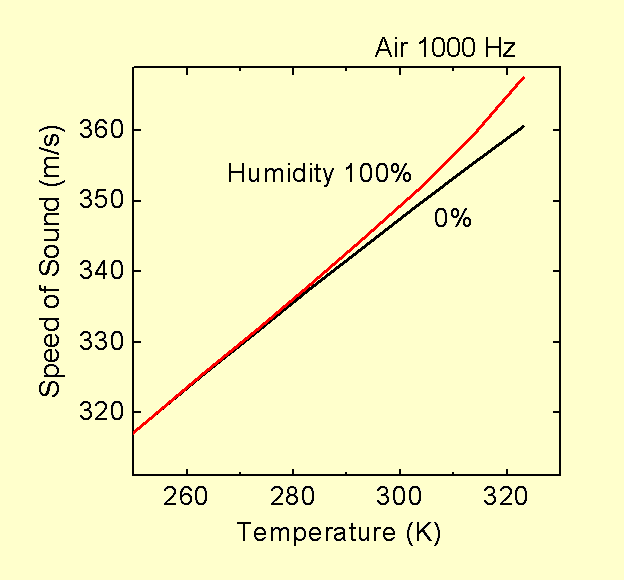
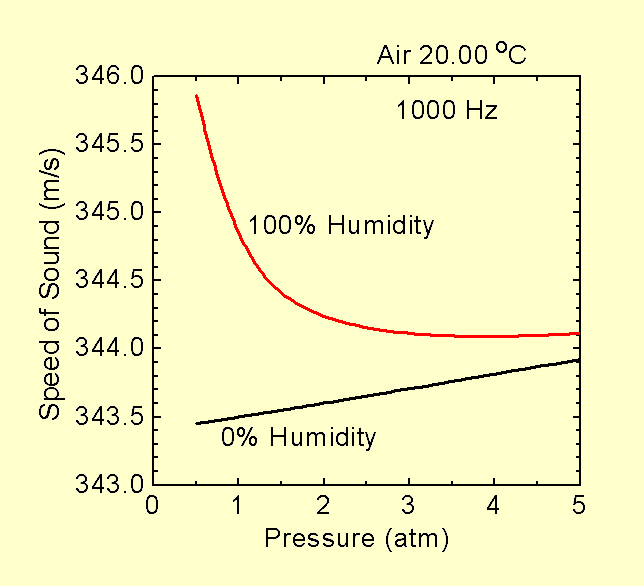
Reference: "Handbook of the Speed of Sound in Real Gases," by A. J. Zuckerwar (Academic Press, 2002).
Sound Speed in Air
(approx SPEED=DISTANCE/TIME. approx. 343 m/s)
formulations:
c water = √(Ks/ρ)
c: celeritas (velocity-speed of sound)
Ks: Coefficient of Stiffness
ρ: density
c air = 331.3 √(1+ (ϑ /273.15) m/s
Doppler Effect
When the constants are matched (see below), from an observer's point of view, the wave-frequency perception of a dynamic sound source according to this formulation:
f = c – 0/c + 0.7c f0
fo=v±vo/v±vs fs.
fo=observer frequency of sound
vo=observer velocity
vs=source velocity
fs=actual frequency of sound waves
A periodic sound wave from a moving source is perceived from a stationary observer; the frequency of the source is 200 Hz with a velocity as 54 kmph. The frequency of sound heard by the observer is (velocity of sound in air = 300 m/s) :
Given : V0=0m/s
Vs=54km/h
=54×36001000
=15m/s
V=300m/s
δ=200Hz
By Doppler effect formula
δ1=δ(V−VsV−V0)
=200(300−15300−0)
=285200×300
=210.5Hz

An observer is moving away from a 100Hz periodic sound wave, velocity is 49m/s and the speed of sound in air is 330m/s. The observer perceives:
Given :V0=49m/s
δ=100Hz
V=330m/s
Vs=0m/s
By doppler effect somula
δ′=δ(V−VsV−V0)
=100(330330−49)
=100×330281
=85.15Hz
Static and Dynamic Sound Wave Propagation
2D representation of Doppler Effect & Sound Barrier

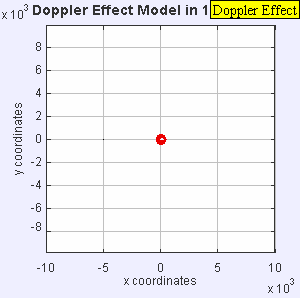

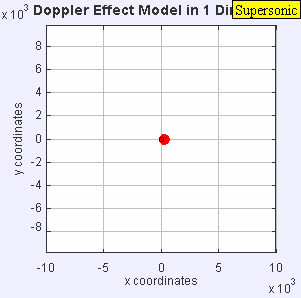
The initial observation pitch becomes lower after the moving object passes the observation point
Due to the fast hyperbolic propagation of sound-waves, an object that is close to the sound barrier or exceeding that barrier has unpredictable trajectory of pitch and sound character; generates a lo-fi massive sound aggregate.
From certain distance, the doppler effect can be perceivable along with this sound mass.
(see the actual hyperbola behind the passing jet)
Nature of sound or sound of nature, Human's Lines of Flight
Sesin doğası ya da doğanın sesi, İnsan'ın Kaçış Çizgileri
Animal Sounds
The Environment: Sounds on Earth and Mars
Voices of the Death: Audio Archeology, Voice, and Prosthetics
Synthesis of a Vocal Sound from the 3,000 year old Mummy, Nesyamun ‘True of Voice’
3-Political Ecology of Sound: Noise, Silence, Place, Ecomusicology and so on
Question: "Is the environmental crisis relevant to music—and more importantly, is musicology relevant to solving it?”
Answer: “Ecocriticism is a field of literature studying cultural products (text, film, advertising, other media, etc.) that imagine and portray human–environment relationships variously from scholarly, political, and/or activist viewpoints. Thus, ecomusicology is not ‘ecological musicology’ but rather “ecocritical musicology.”
(Aaron S. Allen, 2011: 392-393)
Radioactivity and Audibility
Geiger-Müller Tube (Counter)
see also for Arduino DIY Radioactivity Counter
https://www.youtube.com/watch?v=l9-wzEY1Ehg
Climate Change and Carbon Emmission
Songwriters: Ariana Grande / Nicholas Britell / Scott Mescudi / Taura Latrice Stinson Just Look Up lyrics © Kobalt Music Publishing Ltd. 2021
...
Just look up
There is no place to hide
True love doesn't die
It holds on tight and never lets you go
Just look up
You cannot deny the signs
What you've waited for
Don't wait no more
It's right up above you
Just look up
Know I let you down, a nigga can't deny it (uh-huh)
And there's so much I could lose it and, yes, that matters
(yeah)
I've been dealin' with madness (yo)
Wasn't the man you needed (hmm)
You dealin' with sadness, truthfully, it's all on me (hmm)
And I'm sorry, my love (uh, uh)
I'ma heal your heart, I'll hold it in my hand (ooh, yeah)
Time is oh so precious, we don't really have much left now (ooh)
Take my hand, baby (yeah), never leave you, Riley
Look up, what he's really trying to say
Is get your head out of your ass
Listen to the goddamn qualified scientists
We really fucked it up, fucked it up this time
It's so close, I can feel the heat big time
And you can act like everything is alright
But this is probably happening in real time
Celebrate or cry or pray, whatever it takes
To get you through the mess we made
'Cause tomorrow may never come
Just look up
Turn off that shit Fox News
'Cause you're about to die soon everybody
Ooh, I, oh, I
Look up
Here it comes
I'm so glad I'm here with you forever
In your arms
Also see. Belinda’s [Peregrin]'s GAIA discussion by Mark Pedelty's critique on it (Mark Pedelty, Pop Ecology in Current Directions in Ecomusiclogy, 2016: 204-205)
The Edge (David Howell Evans) of U2,
“I think anybody that’s touring is going to have a carbon footprint” (New Musical Express, 2009b)
Mark Pedelty, Ecomusicology, 2011, 3.
selected Live Earth Personalities:
Madonna, Roger Waters, Genesis, Rihanna, Kanye West, Metallica, John Mayer, Alicia Keys, Duran Duran, Bon Jovi, Red Hot Chili Peppers, The Police, Shakira, Snoop Dogg, Kelly Clarkson, Lenny Kravitz, Pharrell Williams, Yusuf Islam (Cat Stevens), Enrique Iglesias, Linkin Park, MIA, Bernini Quartet, The Rome Philharmonic Orchestra,
Al Gore, Leonardo Di Caprio, Cameron Diaz, Ken Watanabe, Naomi Campbell etc.
Rockin' all over the world (but just watch your carbon footprint
Live Earth beams 150 acts to an audience of 2bn ... and burns more carbon than 3,000 Britons do in a year. Critics and fans are split, but everybody wants to save the world
(David Smith, The Guardian, 8 July 2007, accessed December 31, 2021)
Metallica Donates $750,000 to Australian Bushfire Relief Efforts
(Lars Brandle, Billboard 1/7/2020, accessed December 2021)
Metallica’s All Within My Hands Foundation Makes Donation to COVID-19 Relief
Daniel Kreps, Rolling Stones, April 2, 2020, accessed December 31, 2021
(abstract submission deadline January 15, 2022)
This seminar will gather a community of researchers with multidisciplinary focuses working within and beyond literature, film, music, and sound studies to examine the Anthropocentric detrimental impacts on environmental and social levels through the critical analysis, reading, and listening of silence and sound.
The post-1950s period hosted cultural and technological changes in auditory aesthetics with advancements proposing listening to the physical traits of sound. These advancements, which predominantly derived from digital music studios in France and, later, in Germany and the US, proposed sound imaginations in favor of acousmatic music and reduction of listening (Schaeffer 1966; Chion 2016), in which sounds are extracted from causalities, semantics, and other sensorial stimulations. This framework proposed a formalized abstraction of the physicalism and materialism of digital and acoustic audio productions and designs. In the same period, upon the great accelerations (Steffen et al. 2015), increase in the awareness of anthropocentric detrimental impacts on a planetary scale provided the foundation for a new materialistic turn in terms of multiplicities, nature, actants, and affect as opposed to reductive formalizations (Spinoza 1992; Bergson 2001 & 1944; Deleuze 1968; Bennett 2010).
Though these two systems of thought contrast with each other in the way that they deal with materialism, physicalism, and naturalism as relevant to auditory imaginaries, they together shape networks of knowledge (Latour 2004) and production techniques in global circulation, while the audibility of oppressed “others” and the subaltern in ordinary listening and discourse (Said 1984; Trouillot 1995; Spivak 2010) from otherized place imaginaries, such as the Global South, remains silenced. Silence’s material definition and natural-social role continue to be ambiguous among noises, inaudibility, fidelity (Attali 1985, Sterne 2003, Erlmann 2010), and emptiness in soundscapes (Schafer 1977), narration, and musicality.
This seminar welcomes new critical perspectives on silence and sound, building on the material, physical, and natural trichotomy in sound studies with critical approaches to the imaginaries of place, transnationalism, and universalism. Welcomed subjects include and are not limited to silence as natural impossibility (Cage 1961); sound’s role in cosmopolitanism (Kant 1795), eco-cosmopolitanism, sense of place (Heise 2008), and provincializing (Chakrabarty 2000); refrains, differentiation, and rhizomatic multiplicities (Deleuze 1968; Deleuze & Guattari 1987); acousmêtre and vococentrism (Chion 1999); modern and mononaturalism (Latour 1993 & 2013); natural and humanistic historicities (Chakrabarty 2016); cyborg, compost, and posthumanism (Haraway 1985 & 2016), in addition to silence in postcolonial discourse.








